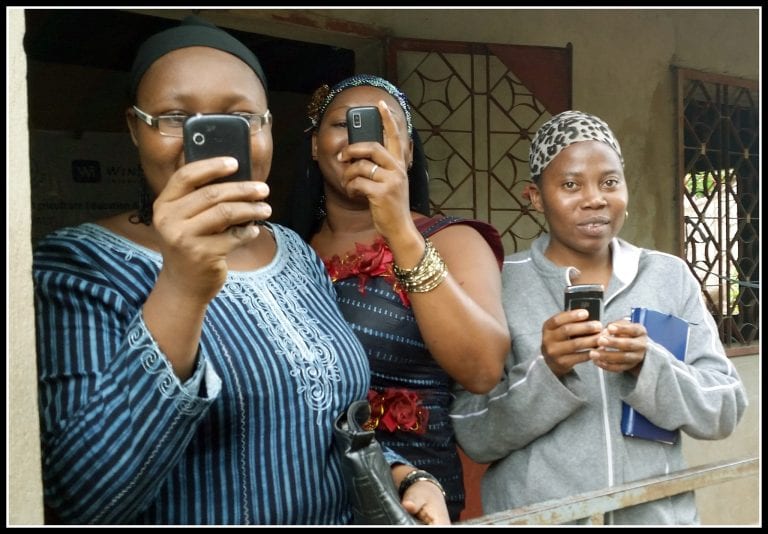The business models of successful technology enterprises are often held up as ideals that technology-centric non-profits should emulate, but many of those expectations don’t hold up under scrutiny. There are lessons to learn from successful businesses and successful charities alike, but they may not be the ones commonly cited.
Unicorns and platypuses sum up the tensions between investors, donors and the private and non-profit sectors in a pair of excellent articles by Abi Taylor, working at the time with Elrha, the global humanitarian innovation and research charity. Unicorns Aren’t Real lists lessons that non-profits should unlearn from the private sector in Silicon Valley, tempering harmful expectations that donors can have for non-profit work. Platypuses Are Real endorses the kinds of kluged-together business models that profit from multiple income streams that are found in successful private enterprises and non-profits alike.
See the E4C Webinar “Waves to Water Prize | Applying Human Centered Design to Deliver Value to Your Customers” with Ruth Salmon, Innovation Manager at Elrha’s Humanitarian Innovation Fund
The ideas symbolized by unicorns and platypuses are important for management teams in social startups and non-profits of any size, as much to build a foundation for realistic goal-setting and competent leadership as to cut down a source of harmful expectations. And while articles are not directed at donors or investors, they could be.
Taking a dive into the issue, we spoke with Ian McClelland, Senior Innovation Manager at Elrha’s Humanitarian Innovation Fund. These are highlights from the conversation.
E4C: Sticking to the theme of lessons from the private sector that non-profits should unlearn, what would you say is a practice that works in private business but has no place in humanitarian design, social entrepreneurship or the non-profit sector in general?
IM: It’s a bit of a cliché, but the mantra to move fast and break things often gets quoted and is also disparaged a bit in the humanitarian sector. I think what’s important is to add a bit of nuance to the conversation. What’s it okay to break, and what’s it not okay to break? And what kinds of risks are we okay taking? The move-fast-and-break-things mantra is often cited for innovation and the criticism of that is in the humanitarian space, where lives are at risk, you can’t do that. You have to innovate responsibly. There, I think it’s important to think about different categories of risk. We often talk about risk in terms of financial risk, or reputational risk or operational risk and risk of harm. And whereas it’s okay for innovation activities to take reasonable financial risks… it’s not okay to place additional risk of harm on communities affected by crisis.
What’s it okay to break, and what’s it not okay to break? And what kinds of risks are we okay taking?
For example, a project that we funded through our water, sanitation and hygiene (WASH) portfolio was looking at alternatives to soap for use in refugee camps where soap isn’t readily available. They proposed that leaves from the moringa tree are thought to have antibacterial properties that could be used as a soap and we looked into funding that, but we stage-gated the funding, including a first step of carrying out lab tests to find out if it did have antibacterial properties before experimenting with its use in refugee communities. In this case we found out that it didn’t, that it wasn’t a useful alternative to soap. But it’s an example of how to manage different kinds of risks. To experiment in a way where you’re not experimenting on people affected by crisis.
E4C: The advice in “Unicorns” is directed at humanitarian innovators, but some of it sounds like an indictment of investors and donors to humanitarian innovation organizations and other non-profits. Turning these “lessons to unlearn” around toward the investors, what advice would you have for them?
IM: Within the private sector, particularly within Silicon Valley and venture capital circles, you have a huge well of patient funding that is looking for long-term returns on investment, and it is willing to take a lot of risks with that long-term payout in mind. And within the social sector and humanitarian sector that kind of long-term thinking still isn’t really there. Within the humanitarian space, funding is mostly on yearly cycles, 3-5 years if you’re very lucky. So even in the innovation space you’re pressured to deliver impact in a relatively short period of time.
Read more | Investment Trends: Social Ventures Follow the Money Trail in Emerging Economies
My personal advice would be to increase investment, at least in part, according to longer-term transformational aims which might be aligned to agreed agendas like increasing use of cash transfers in humanitarian aid or localization, for example. If you take as your starting point that there’s an increasing funding gap between humanitarian needs and the resources that are available… it makes sense to think about how we can apply the limited resources we have for innovation strategically to achieve the kinds of transformations that are necessary to address the scale of the challenge.
Because we are so limited in resources, that requires a greater level of focus, and looking more at mission-oriented innovation approaches.
Funding in the innovation space lacks that long-term vision and willingness to wait on long-term returns that’s often there in the private sector. And because we are so limited in resourcing, that requires a greater level of focus and looking more at these kinds of mission-oriented innovation approaches. At least as one part of the mix of funding.
E4C: Do you think anyone is going to take your advice?
IM: Um, don’t know. We’ll see. [laughs]
Given the pressures on the sector, the focus on near-term impact is understandable but in some cases I think there’s another possibility which is that large government and institutional donors with a view on the long-term could be complemented by local impact investment that was focused on more short-term returns. How might we think differently about the mix of funding and the role different funders play, so that that balance is there and you are looking toward those immediate impacts but also with one eye on the future?
What I envision is that there could be more integrated forms of funding.
What I envision is that there could be more integrated forms of funding.
E4C: One of “Unicorn’s” lessons to unlearn is the myth that digital business models are free. The topic brings to mind the criticism you sometimes hear directed at social enterprises and non-profits that employ software as the primary solution to a problem, when the problem might require a more hands-on approach. Software can be cheaper and easier than more tangible products and human interactions, but it’s not always as useful. Do you see a tendency in this space to create digital products even when more analog solutions might work instead?
IM: There is a kind of a tendency to see digital products as a panacea, where the real problems they’re addressing are slightly different or not what it first appears.
The problem with jumping to digital solutions is that it doesn’t necessarily get to the real nature of the problem. So, I think that’s always a risk. Products and digital solutions have a part to play, but it’s a case of not overstating their role and neglecting some of the non-tangible aspects of what makes for a successful solution.
Back during the height of the Mediterranean refugee crisis in Europe around 2015-16, hundreds of ‘apps for refugees’ were developed aimed at providing useful information such as access points for food, healthcare, or border crossings, but they weren’t used because refugees still preferred to speak with UNHCR staff and partners face-to-face. The problem wasn’t access to information generally; it was that rumors, changing rules and regulations, and fluctuating asylum policies meant refugees preferred accurate and up-to-date information from trusted sources. Apps built by outside developers did not fill that trust gap.
Ultimately, there is a tendency to focus on technical solutions rather than people and relationships and the kind of glue that holds stuff together. We generally accept the criticality of the socio-cultural aspects of humanitarian work in delivering successful interventions, but they’re often neglected in favor of more tangible products.
E4C: “Platypuses” draws on big tech for examples of successful hodge-podge business models. Can you think of some conglomerated business models in the humanitarian sector that seem to be working?
IM: Most large NGOs would combine [types of funding] like unrestricted fundraising that they might put to some ends with restricted income from donors that they might use for a different purpose… I think within the big organizations a multitude of business models exist quite commonly.
To give a couple of examples from our scaling portfolio, we support one organization called Translators Without Borders, who provide local language translation as a capability. And another organization called Field Ready, who use 3D printing and other approaches to manufacture humanitarian supplies locally. The funding through our scaling program was to help them test different approaches and business models to see what would stick.
See the E4C Webinar: “We Can’t Buy It, So Can We Make It? Revolutionizing Humanitarian Aid Through Local Making” with Field Ready and Humanitarian Makers
Both of these organizations pursued a dual-approach strategy combining both specific deployments or activations, usually through partnerships and grant funding, with a broader focus on “humanitarian-to-humanitarian” service provision, including advocacy to increase the market for their innovation and drive the systemic changes necessary for their sustainability.
You really need an insatiable enthusiasm for learning about how to make change happen. And how to think about things in a joined-up way. Not just focusing on the products, but taking a systems-thinking perspective.
So, with Field Ready they combined direct grant funding for deployments with exploration of humaitarian-to-humanitarian service provision through the development of replicable WASH and medical “kits”, as well as training for local NGOs, and the development of an online platform for sharing 3D printing designs. Translators without Borders, similarly, combined direct deployments with influencing the broader environment for language translation, doing things like capacity building in other organizations and advocacy efforts as well.
E4C: Any parting advice for humanitarian innovators?
IM: There are no short cuts or recipes for success. You really need an insatiable enthusiasm for learning about how to make change happen. And how to think about things in a joined-up way. Not just focusing on the products, but taking a systems-thinking perspective, understanding the environment you’re working in, the power dynamics in play, and building the relationships that support uptake and adoption.

